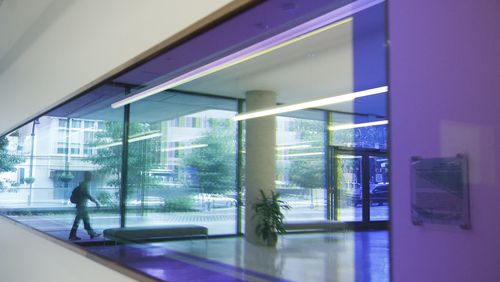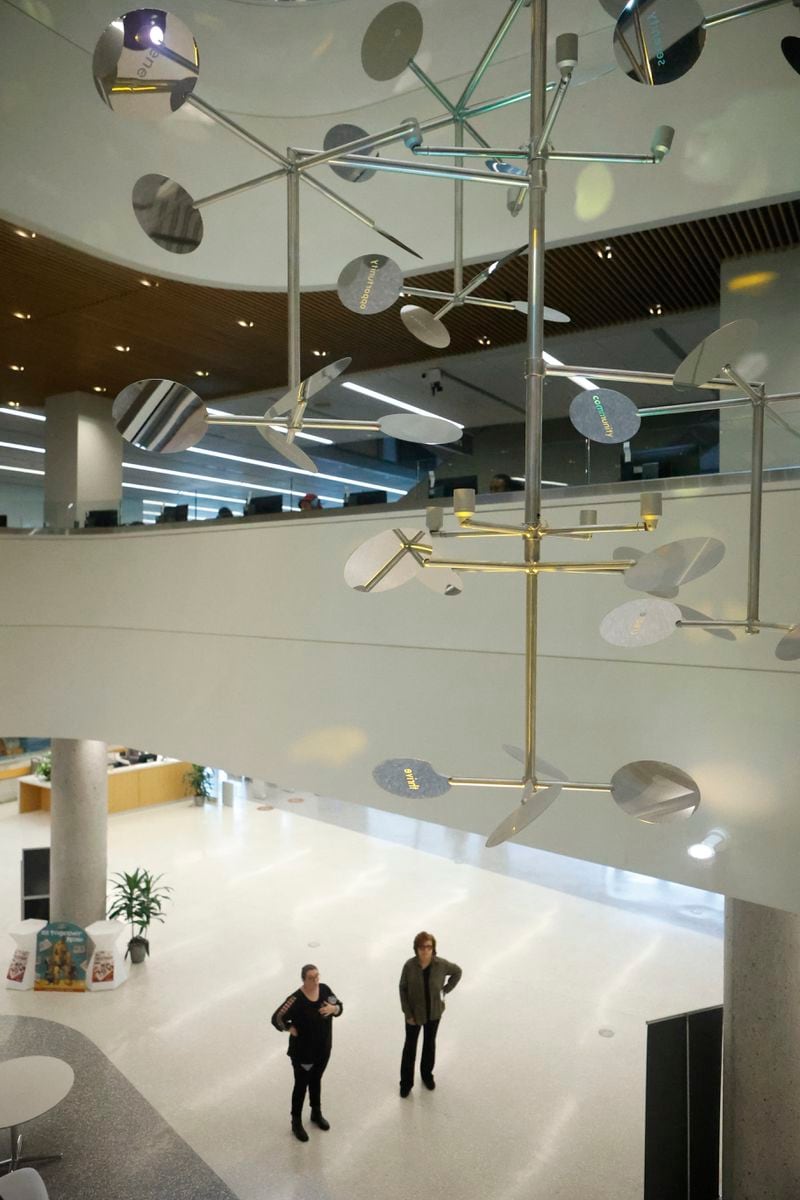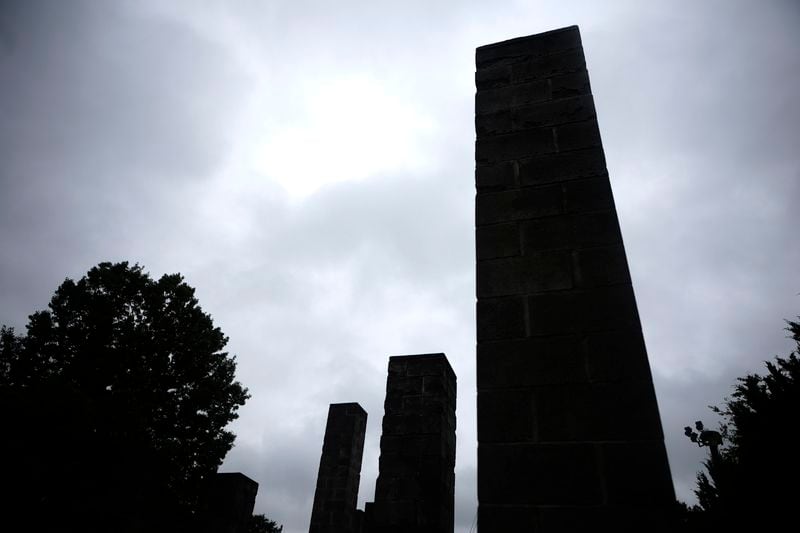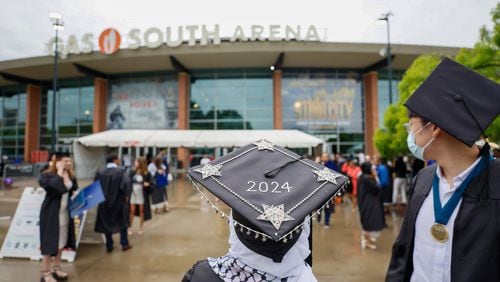If you pass a sculpture in a Fulton County park or a painting in a county library, it’s not just decoration. It has value. The county owns $7.6 million worth of art: 618 pieces in 67 locations, according in part to a recent appraisal done for insurance purposes.
While that’s a lot, it’s only about a third of the value of art owned by the city of Atlanta.
The appraisal only covers part of the county’s collection; the county is assessing some of its collection each year, focusing on older and more prominent pieces, said Alex Frankcombe, county public art manager. The collection’s estimated total value is based on an older complete appraisal, values assigned by the artist, or the purchase price, he said.
Frankcombe said public art promotes civic engagement, teaches about culture and perspectives, attracts visitors and increases the aesthetic appeal of county facilities.
The county’s collection has mostly been acquired in the last three decades through purchase or commission, he said. A “small amount” has been donated, such as “54 Columns” by the Taylor family.
“And now it’s the most valuable piece in our collection,” Frankcombe said. The 1999 installation by Sol Lewitt, in a park adjacent to John Lewis Freedom Parkway, is valued at $1.1 million.
Commissioned and purchased works remain in the spots for which they were acquired, Frankcombe said. Art acquired for the county’s art-on-loan collection is displayed in a public area for two years, then is available for other county departments to request, he said.
The county established its art policies in 1993, Frankcombe said. One percent of the budgets for renovation or construction goes to fund public art.
Commissioned pieces are in public facilities countywide, Frankcombe said. Using the 1% set-aside for art, a $200 million bond issue for library renovation resulted in the acquisition of about 300 artworks now distributed among 30 library locations, he said.
But many more are in public offices such as the county Government Center.
“I’d say the majority of our collection is probably downtown,” Frankcombe said.
In the county collection
Most of the county’s collection is “2-D fine art,” but many of the 70-odd commissioned pieces are sculptures, Frankcombe said. Then there are a few murals, such as in the East Point library, he said.
The county’s oldest piece, the “Uncle Remus Tiles,” dates to 1902, said spokeswoman Jessica Corbitt. The tiles were above the fireplace in the children’s area at the former Carnegie Library, and are now in the county’s Central Library on the same site, she said.
Angus Wynne Jr., developer of Six Flags Over Georgia, also developed an area along Fulton Industrial Boulevard and commissioned multiple sculptures for it in the 1960s, Frankcombe said.
“Unfortunately the development didn’t do too well. It went bankrupt and sold to a bank in Minneapolis,” he said. Some of the sculptures were moved there.
Credit: michael.blackshire@ajc.com
Credit: michael.blackshire@ajc.com
Nancy Livengood, county public art conservator, said several remaining pieces were donated to Fulton County. One of those, which couldn’t be removed, was the spider-like Atlanta Gateway sculpture, then considered to be the largest outdoor sculpture in the country, Frankcombe said. The work by artist Peter Forakis was built in 1967 and restored in 2015.
More county-owned pieces are in the Hammonds House Museum in the West End, Corbitt said. The county owns the museum property and works closely with the independently-managed nonprofit Hammonds House, she said.
From now through Sept. 4, works by 14 local artists are showcased in the Peachtree and Assemble Gallery in the Government Center, Livengood said. “Journey Then & Now: Revisiting Artists from the Fulton County Art Collection,” pairs artists’ older works that were already owned by the county with the creators’ recent pieces, she said.
As Fulton County’s latest commission, the county and the city of Johns Creek are collaborating on a “flagship piece” using steel from the 160-year-old Rogers Bridge, which was decommissioned two years ago, Frankcombe said.
He’s not aware of the county ever selling any of its art.
“Arts funding in the state of Georgia is quite challenging as it is,” Frankcombe said. “We tend to savor every piece that we acquire.”
Older and pricier
Atlanta’s art collection goes back further, said Robert Witherspoon, city public art program manager.
“We had public arts and monuments in the city starting in the late 1800s,” he said. “A lot of these monuments were dedicated to historical men of the city, thinkers that helped build the city at the time like Henry Grady or Samuel Spencer.”
Emphasis on building a modern public art program began in the 1970s under Mayor Maynard Jackson, Witherspoon said. In 1977, the city passed a “percent for art” ordinance, setting aside 1.5% of any capital project budget for art in city facilities. The full percent is for the art itself, and the half-percent for maintenance.
The ordinance paid for architectural features, sculptures and more; not just at City Hall, but at fire stations and police precincts, Witherspoon said.
“During the 1996 Olympics there was a massive influx of new public artwork to allow the city to shine in the best light on the international stage,” he said.
Credit: michael.blackshire@ajc.com
Credit: michael.blackshire@ajc.com
The Corporation for Olympic Development in Atlanta commissioned art at 22 sites, all of which were subsequently donated to the city, Witherspoon said.
And Atlanta has received “significant” art donations from many other sources, he said.
Now the city has about 150 public art sites, some indoors but most outdoors in parks or in front of city buildings, Witherspoon said. There are also about 75 “limited lifespan” works — mostly murals — citywide, he said.
Atlanta has an “art on loan” program — mostly contemporary paintings by local artists, Witherspoon said. About 300 works in storage can be requested for display in areas accessible to the public on city property, he said.
“There is usually some rotation of the artwork during the changing of an administration,” Witherspoon said.
Atlanta doesn’t assess the value of its art collection very often; the last full survey was in 2008, done for insurance purposes, he said. Now the collection is valued at more than $22 million.
“Every time we add a new public artwork to the collection, the purchase price of that is added to the value of the collection,” Witherspoon said.
The city has never sold, donated or traded any of its art collection, he said. But the Atlanta History Center does have a long-term loan of the valuable Cyclorama, where it’s displayed at its full scale in a climate-controlled environment, Witherspoon said.
“The Atlanta History Center went to great lengths to restore and display the Cyclorama at the history center, so technically the Cyclorama still belongs to the city but it’s on, I believe, a 100-year loan with an option to renew,” he said.
Credit: michael.blackshire@ajc.com
Credit: michael.blackshire@ajc.com
About the Author










